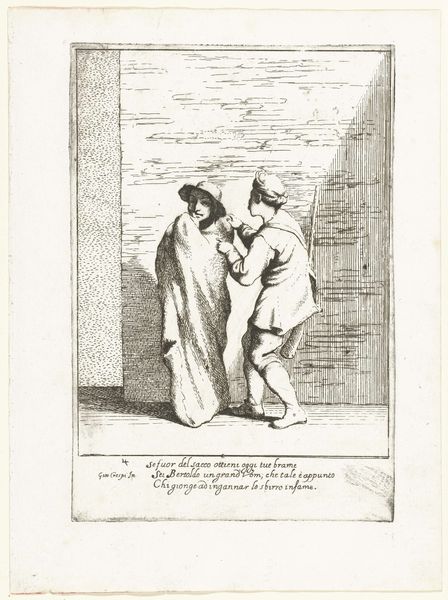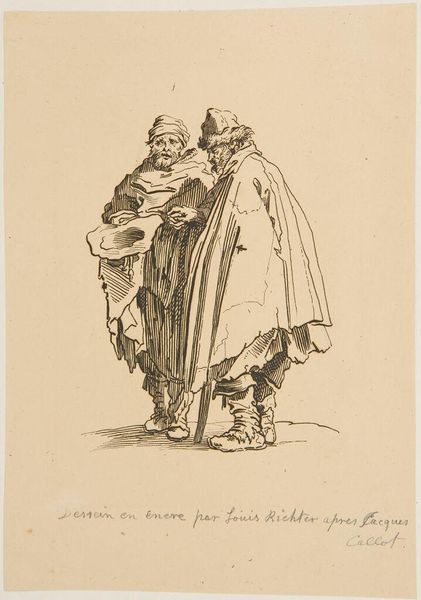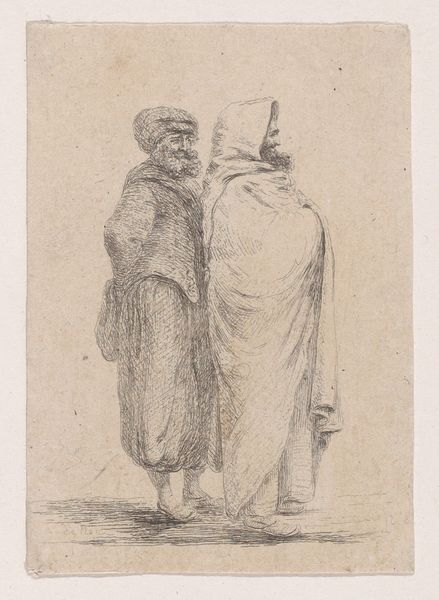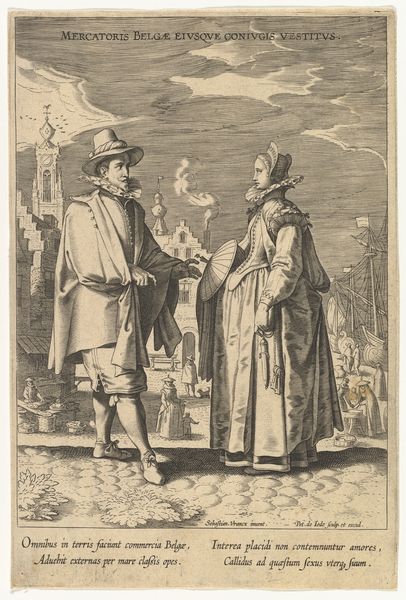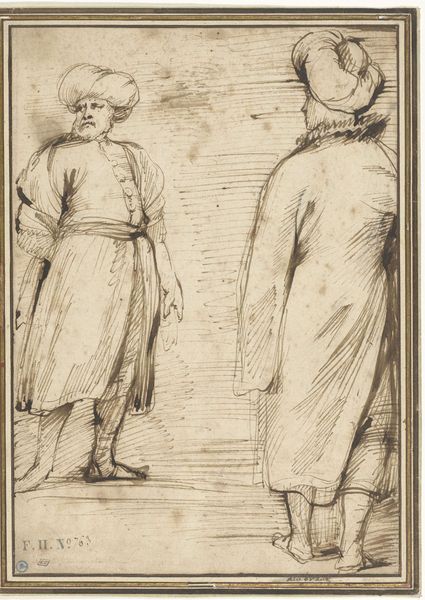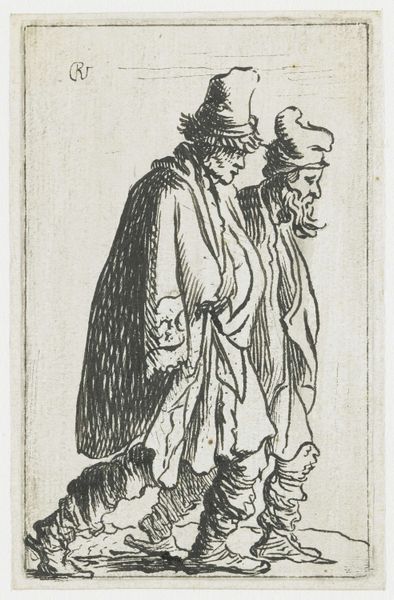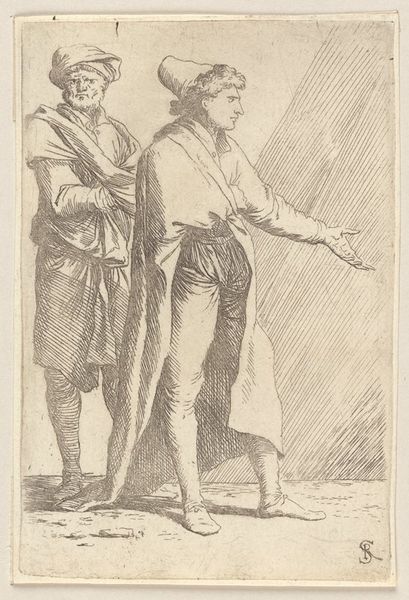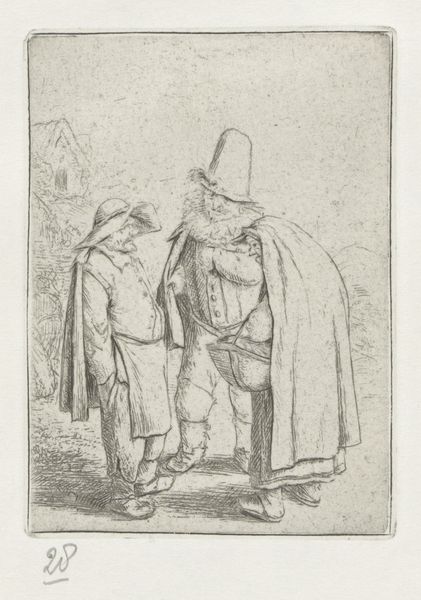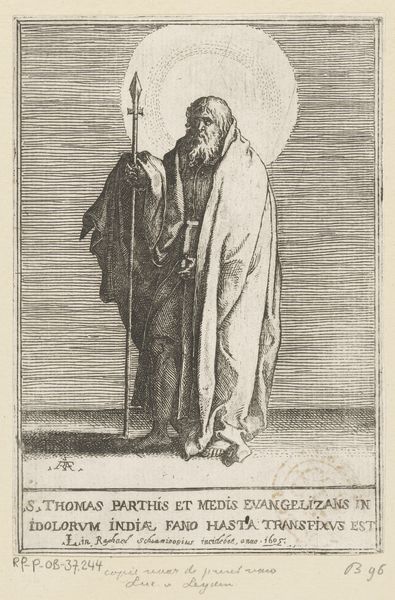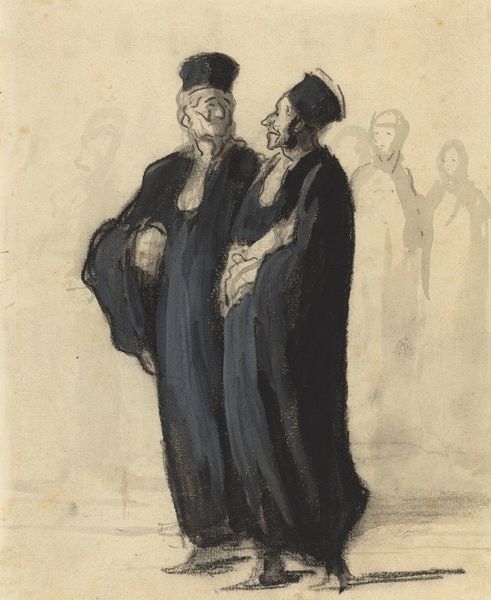
print, engraving
#
portrait
#
baroque
# print
#
old engraving style
#
figuration
#
line
#
portrait drawing
#
genre-painting
#
engraving
Dimensions: 5 3/8 × 4 1/4 in. (13.65 × 10.8 cm) (image)7 1/2 × 5 7/16 in. (19.05 × 13.81 cm) (sheet)11 3/4 × 9 5/8 in. (29.85 × 24.45 cm) (mount)
Copyright: Public Domain
Curator: Let's turn our attention to this engraving, "Portrait of Daniel Van Heil," created in 1649. It resides here at the Minneapolis Institute of Art. What's your initial impression? Editor: They’re caught mid-conversation, aren’t they? A really interesting composition— stark lines, almost a cartoonish quality given their cloaked figures. There's an undeniable element of scrutiny in their sidelong glances. Curator: I'd say this work presents an intriguing case study for analyzing societal perceptions and power dynamics of the time. Note how the stark line work lends itself to creating very individual characteristics in both subjects. This was printed in 1730, a later printing after a work created almost 100 years before by W.M.S chez De Beaulieu and Ostertreich. Editor: It almost feels subversive. Who are these individuals, and what social codes are they either upholding or flouting? Consider their placement on the page— the weight of line creating very firm anchors at the base of each body— their feet and shadows tell us how the piece would be grounded in a specific time and place. Curator: Exactly. In the context of genre paintings popular at the time, such figuration provides insight into everyday lives but through an incredibly subjective lens. This lends weight to questions regarding not only their presence but also representation, making it a social document as much as an artistic piece. Editor: Agreed. Viewing "Portrait of Daniel Van Heil" in our contemporary moment raises crucial considerations of gaze, visibility, and the role visual culture plays in shaping understanding. It’s a reminder of how art intersects with, and can influence, cultural norms. Curator: Yes, and perhaps a challenge for institutions to make available a more open understanding of artistic interpretation within museum collections today.
Comments
No comments
Be the first to comment and join the conversation on the ultimate creative platform.



